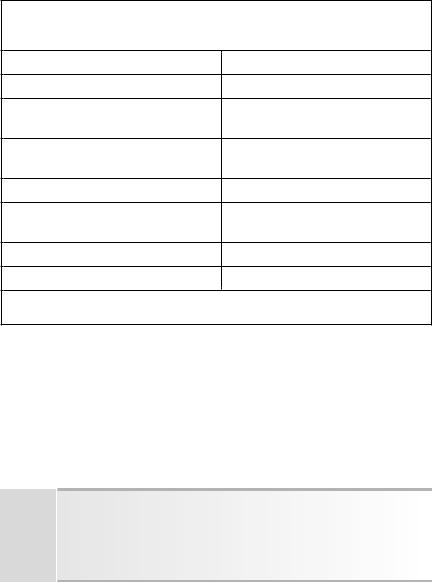
- •Contents
- •Thanks and Acknowledgements
- •Introduction
- •1 Business topics: jobs and careers
- •2 Business topics: the company
- •3 Business topics: products and services
- •4 Business topics: management and marketing
- •6 Business topics: information technology
- •7 Business topics: cultural awareness
- •8 Business communication skills: telephoning
- •9 Business communication skills: meetings and negotiations
- •10 Business communication skills: presentations
- •11 Business communication skills: social English
- •12 Language work: speaking
- •13 Language work: writing
- •14 Language work: listening
- •15 Language work: reading
- •16 Language work: pronunciation
- •17 Language work: vocabulary
- •18 Language work: grammar
- •19 Exploiting coursebooks
- •Index

Exploiting coursebooks
19Exploiting coursebooks
19.1Revise key phrases
Focus |
|
Reviewing key phrases, classifying |
Level |
|
Elementary – Advanced |
Preparation |
|
Find a ‘Useful Language’ list from a coursebook. The list needs to |
|
|
have functional headings with at least two phrases per heading: see |
|
|
the example in Box 81. Write on the board two phrases per function, |
|
|
in jumbled order, but do not write the functional headings. |
|
Alternatively, photocopy and cut up the phrases in Box 82, which are |
|
|
|
taken from Box 81. |
|
|
|
Box 81 Telephoning phrases
Answering the phone |
Checking |
Good morning, ABC, how can I help you? |
Sorry, I didn’t catch that. |
Sales Department, Patricia speaking. |
Could you spell your name please? |
Stating reason for call |
Making arrangements |
I’m calling about . . . |
When would be a good time? |
The reason I’m calling is . . . |
What about next Tuesday at ten? |
Saying someone is not available |
Changing arrangements |
I’m sorry, she’s/he’s not available at the |
I’m afraid I can’t come on that day. |
moment. |
Sorry. Can we reschedule for another |
Sorry, she’s/he’s away on business / in a |
time? |
meeting. |
Ending a call |
Taking a message |
Right, I think that’s all. Thanks for your |
Can I take a message? |
help. |
Would you like to leave a message? |
Goodbye and thanks. / Bye for now. |
|
© CAMBRIDGE UNIVERSITY PRESS 2005 |
Procedure
The students try to work out which phrases go together, i.e. belong to the same functional group. If the students are working with slips of paper they can match them on the desk in front of them.
105

Five-Minute Activities for Business English
Box 82 Telephoning phrases for photocopying and cutting up
Can I take a message?
Good morning, ABC, how can I help you? Goodbye and thanks. / Bye for now.
I’m afraid I can’t come on that day.
I’m calling about . . .
I’m sorry, she’s/he’s not available at the moment.
Sorry, I didn’t catch that.
What about next Tuesday at ten?
Would you like to leave a message? Sales Department, Patricia speaking.
Right, I think that’s all. Thanks for your help.
Sorry. Can we reschedule for another time?
The reason I’m calling is . . .
Sorry, she’s/he’s away on business/in a meeting.
Could you spell your name please? When would be a good time?
© CAMBRIDGE UNIVERSITY PRESS 2005
Follow-up
Go on to elicit the functional headings and brainstorm other phrases.
Variation
Dictate the phrases initially, in jumbled order, rather than writing them on the board.
19.2 DIY gapfill
Focus Specific vocabulary or grammar Level Elementary – Advanced
Preparation Take a few paragraphs (e.g. the first few) from a text that the students are familiar with. Write the text on the board, but leaving gaps. Some suggestions are given in Box 83.
Procedure
Refer to the text on the board. Ask students to complete the gapfill.
106

Exploiting coursebooks
Box 83 Techniques for gapping
Gap key topic vocabulary, e.g. words from useful collocations
Gap key words of a particular grammatical type, e.g. prepositions or articles Gap every seventh word.
Variation
Initially, just have gaps on the board and give no additional help. But if the students need extra help, then after 2–3 minutes you can do one of these:
–write the missing words in jumbled order at the bottom
–write the first letter in the gap.
19.3 Cover it up (two columns)
Focus Extending a coursebook exercise
Level Elementary – Advanced
Procedure
1Before doing a matching exercise with two columns, students cover up the words in the right-hand column. See the example in Box 84.
Box 84 Two-column exercise where right-hand column can be covered
© CAMBRIDGE UNIVERSITY PRESS 2005
107

Five-Minute Activities for Business English
2Students look at the items in the left-hand column and try to predict the right-hand column. Depending on the exercise this might be giving a definition, supplying the second noun of a noun-noun collocation,
etc.
3They uncover the second column and do the exercise as usual.
Follow-up
•In a later lesson, as revision, the teacher reads out the word(s) in the lefthand column item by item. Ask the students to wait five seconds to give everyone time to think, then they give the definition, the collocation, or whatever the exercise requires.
•Alternatively, the students simply cover the right-hand column again and try to remember the matching items.
19.4 Cover it up (gapfill)
Focus Extending a coursebook exercise
Level Elementary – Advanced
Procedure
1Before doing a gapfill exercise, ask students to cover up the words to be used (often in a box) with a piece of paper.
2They look at the exercise and try to predict possible words that might fill the gaps.
3Then they uncover the words and do the exercise as usual.
Follow-up
In a later lesson, as revision, the teacher reads out the original exercise containing the gaps again. The teacher says ‘Mmm’ where the gapped word occurs (but continues reading to the end of the sentence to give a context). Ask the students to wait five seconds at the end to give everyone time to think, then on the teacher’s hand signal they chorally shout out the
answer.
108

Exploiting coursebooks
19.5 Noticing language in a tapescript
Focus Reviewing vocabulary
Level Elementary – Advanced
Preparation Select a completed listening activity.
Procedure
1Ask students to look at the tapescript. Then:
a)for business topics, ask them to underline five items of vocabulary related to the topic area; remind them that ‘vocabulary’ includes more than single words – look for useful collocations too.
b)for work on communication skills or interactive situations, ask them to underline five useful words or phrases for that particular context.
2Students compare with partners to see if they underlined the same items.
Follow-up
•Students write the items on pieces of paper or in their notebooks, then try to use some of them in a following discussion (topic) or role play (communication skill).
•Students transfer the items to their notebook, with two examples of use:
ii)the item in its original sentence in the tapescript to show a context.
ii)the same item in another personalised sentence of their own choosing.
19.6 Role play changes
Focus Maximising speaking practice
Level Elementary – Advanced
Procedure
1Start with any completed short role play, from a previous or the same lesson. For example, a short telephone call or typical social English situation.
2Ask the students to repeat the same role play, but with one or more of the following changes:
a)change partners
b)change roles
c)change a small but important detail that will then affect the outcome
d)pretend one of the participants:
–is feeling tired/happy/sick/angry/bored/excited/has a headache.
–is busy and wants to finish the conversation and go.
109
